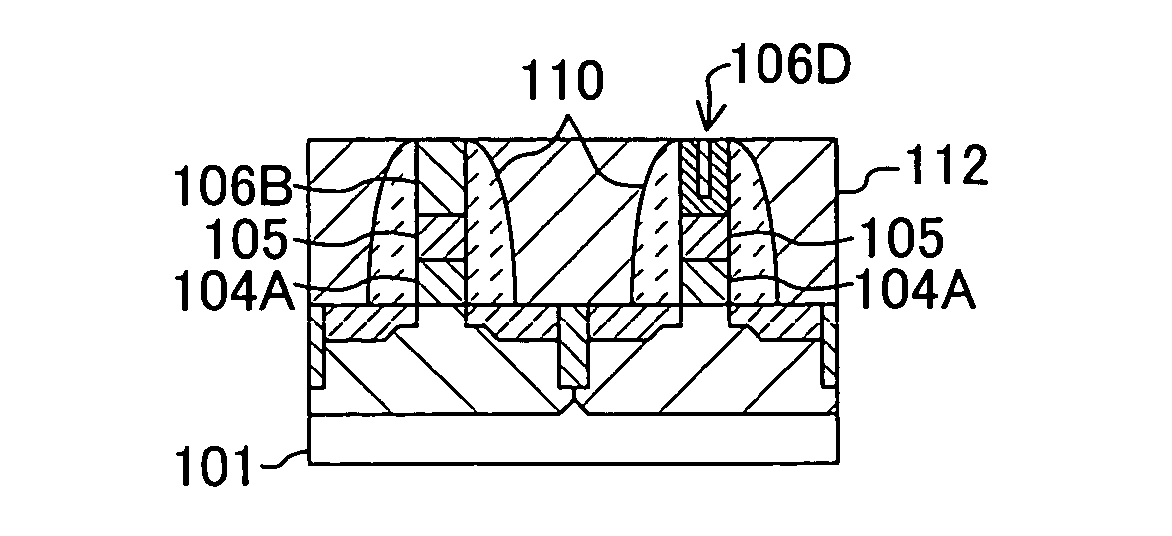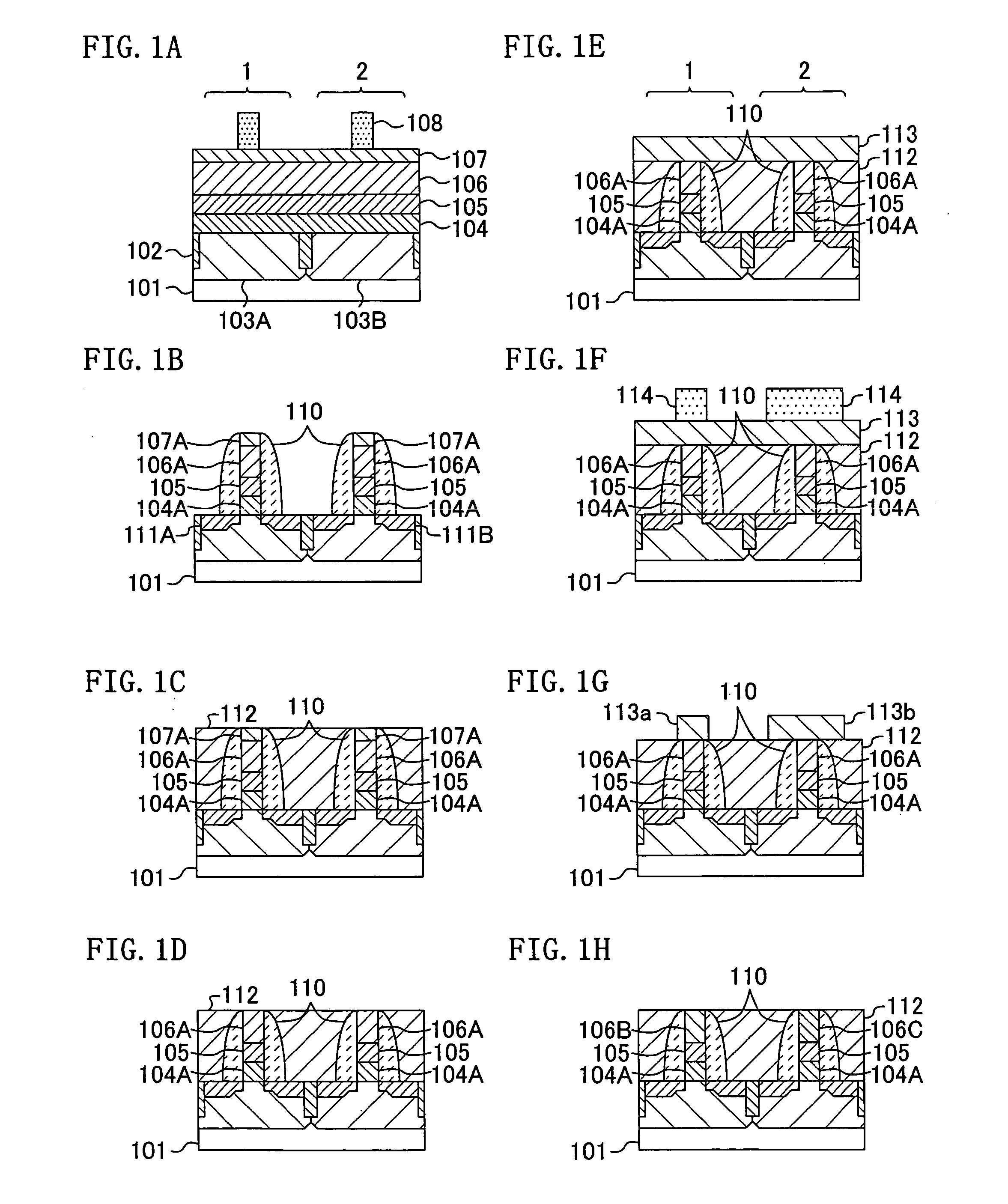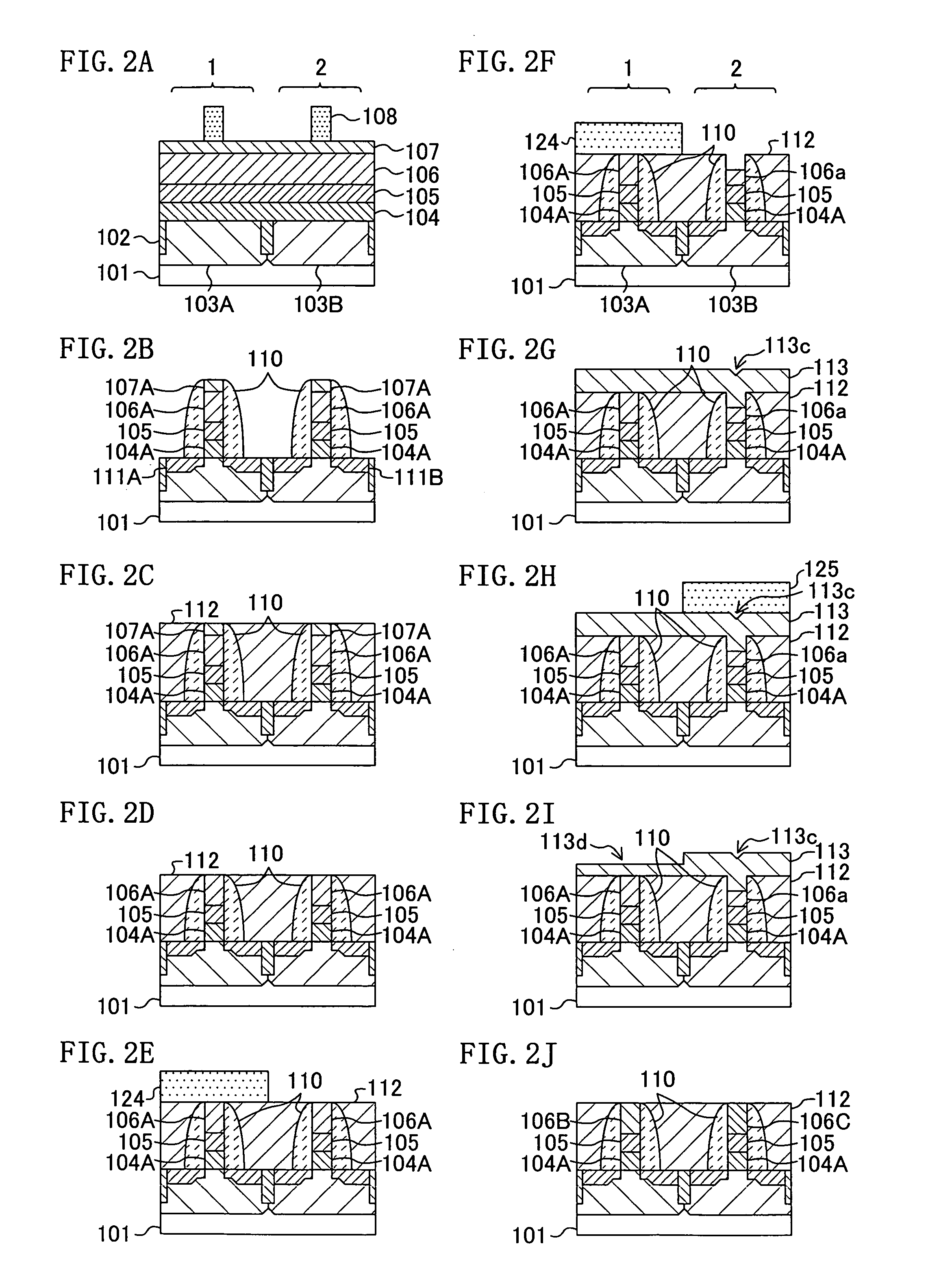Insulating buffer film and high dielectric constant semiconductor device and method for fabricating the same
a buffer film and semiconductor technology, applied in the direction of semiconductor devices, basic electric elements, electrical equipment, etc., can solve the problems of increasing the gate leakage current caused by tunnel current coming to the surface, deteriorating carrier mobility, and inability to obtain desired operating current, etc., to achieve enhanced driving performance of transistors
- Summary
- Abstract
- Description
- Claims
- Application Information
AI Technical Summary
Benefits of technology
Problems solved by technology
Method used
Image
Examples
embodiment 1
[0081]A method for fabricating a semiconductor device with a CMOS structure according to a first embodiment of the present invention will be described with reference to FIGS. 1A through 1H.
[0082]First, as shown in FIG. 1A, an isolation film 102 serving as a shallow trench isolation (STI) is selectively formed in an upper portion of a substrate 101 made of silicon (Si) having a principal surface whose plane orientation is the (100) plane, for example. Subsequently, ions are implanted in an upper portion of the substrate 101, thereby forming a p-well 103A in an n-transistor region 1 and an n-well 103B in a p-transistor region 2. In this manner, a CMOS device region is formed in the principal surface of the substrate 101. Thereafter, the surface of the substrate 101 is subjected to known standard RCA cleaning and dilute hydrofluoric acid (HF) cleaning in this order. Then, heat treatment is performed on the substrate 101 whose surface has been cleaned, at a temperature of about 600° C. ...
embodiment 2
[0102]Hereinafter, a method for fabricating a semiconductor device having a CMOS structure according to a second embodiment of the present invention will be described with reference to FIGS. 2A through 2J. In FIGS. 2A through 2J, components also shown in FIGS. 1A through 1H are denoted by the same reference numerals, and the description thereof will be omitted. The process steps shown in FIGS. 2A through 2D are the same as those described in the first embodiment.
[0103]First, in the process step shown in FIG. 2D, hard masks 107A made of silicon oxide, an upper portion of an interlayer insulating film 112 and upper portions of side walls 110 in an n-transistor region 1 and a p-transistor region 2 are etched back with an etching gas containing fluorocarbon as a main component, thereby exposing gate electrodes 106A.
[0104]Next, as shown in FIG. 2E, a resist pattern 124 is formed on the interlayer insulating film 112 in the n-transistor region 1 or the p-transistor region 2 by lithography...
embodiment 3
[0113]Hereinafter, a method for fabricating a semiconductor device having a CMOS structure according to a third embodiment of the present invention will be described with reference to FIGS. 3A through 3K. In FIGS. 3A through 3K, components also shown in FIGS. 1A through 1H are denoted by the same reference numerals, and the description thereof will be omitted. The process steps shown in FIGS. 3A through 3C are the same as those described in the first embodiment.
[0114]First, as shown in FIG. 3C, an interlayer insulating film 112 made of silicon oxide is deposited over the entire surface of a substrate 101 including hard masks 107A and side walls 110. Subsequently, the upper face of the interlayer insulating film 112 is planarized by, for example, a CMP process, thereby exposing the hard masks 107A.
[0115]Next, as shown in FIG. 3D, a resist pattern 124 is formed on the interlayer insulating film 112 in an n-transistor region 1 or the p-transistor region 2 by lithography to mask the n-t...
PUM
 Login to View More
Login to View More Abstract
Description
Claims
Application Information
 Login to View More
Login to View More - R&D
- Intellectual Property
- Life Sciences
- Materials
- Tech Scout
- Unparalleled Data Quality
- Higher Quality Content
- 60% Fewer Hallucinations
Browse by: Latest US Patents, China's latest patents, Technical Efficacy Thesaurus, Application Domain, Technology Topic, Popular Technical Reports.
© 2025 PatSnap. All rights reserved.Legal|Privacy policy|Modern Slavery Act Transparency Statement|Sitemap|About US| Contact US: help@patsnap.com



